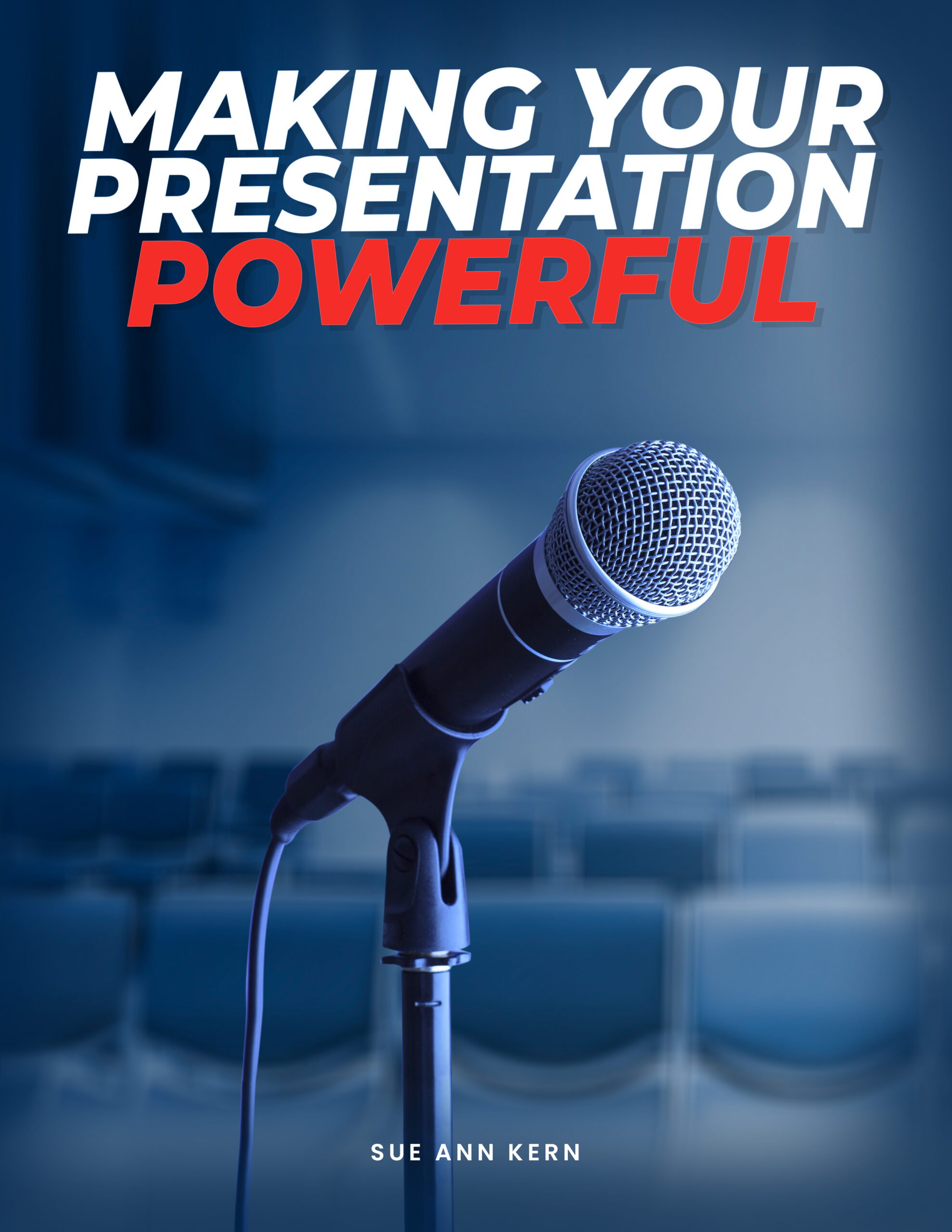We’ve talked about the importance of body language and how much more powerful your presentation will be if you use it effectively and purposefully. We work on body language a lot during my public speaking skills workshops.
Did you know that your eyes are actually part of your body?
Eye contact during your presentation is as important as body language and is essential for your audience to build trust in you. Making eye contact is a sign that you are trustworthy. People don’t trust people who don’t make eye contact because they seem guilty, unprepared, and uninspired. Even your dog won’t make eye contact with you after they’ve chewed up your shoe.
 Lack of eye contact can indicate that you are not interested, are not confident in your topic, are bored, or forgot what you’re going to say. It can indicate that you have stage fright and are intimidated by your audience! How engaged are you with a speaker who doesn’t look into the eyes of the audience members and instead focuses on their notes, their PowerPoint, or the teleprompter? Eye contact is essential for the audience to feel connected to you and to feel that you are not just talking at them, but really communicating with them. We often look away more when we are speaking than when we are listening. This is an important habit to break when you are speaking in either a professional or social situation. Look people in the eye and show them that you are interested, engaging, and trustworthy, even if you do have a fear of public speaking.
Lack of eye contact can indicate that you are not interested, are not confident in your topic, are bored, or forgot what you’re going to say. It can indicate that you have stage fright and are intimidated by your audience! How engaged are you with a speaker who doesn’t look into the eyes of the audience members and instead focuses on their notes, their PowerPoint, or the teleprompter? Eye contact is essential for the audience to feel connected to you and to feel that you are not just talking at them, but really communicating with them. We often look away more when we are speaking than when we are listening. This is an important habit to break when you are speaking in either a professional or social situation. Look people in the eye and show them that you are interested, engaging, and trustworthy, even if you do have a fear of public speaking.
When you are speaking in a large auditorium, it would be nearly impossible to make eye contact with the people in the back of the room. But don’t just pay attention to the people in the few front rows who you can actually see. It is OK to look at the tops of your audience’s heads. The people in the back will feel like you are at least recognizing that they are there! However, if it is a small room, you really can’t do that without being obvious. You will have to look in some eyes! When you are speaking, find a few friendly faces and focus on them periodically. It only takes 2 or 3 seconds to connect with an audience member. People like to be noticed and they like to feel that you are talking directly to them. If you are an introvert, this can be difficult and will take a lot of practice and courage, but your audience will not cut you a break if you don’t make eye contact.
Use notes if you must, but never read from your notes. When you look at your notes, you should not be speaking. When you are speaking, you should not be looking at your notes. Only speak when you are looking at your audience. Look at your notes to determine what to say next, and then look at your audience before you start speaking.
The same rules apply to a PowerPoint-type presentation. Remember, the slide shows the data, but you are responsible for interpreting the data and letting the audience understand why it is important to them. Don’t read from the screen and don’t talk to the screen. Look at the screen, tap or point towards something important, then face your audience and begin speaking. Consider using the Talk-Click Trick: introduce the main point and message of the next slide to get your audience’s attention and curiosity piqued. Then click to advance the slide so your audience can then see the information.
Here are a few more tidbits for you to remember to help you make more effective eye contact:
- Find a friendly face to look at when you feel nervous, but don’t stare at them the entire time. That friendly face can help you overcome a bit of your stage fright!
- Scan the room and linger for a second or two on each person you look at. Don’t glance over them and don’t stare at them.
- Don’t look at the floor – did you forget what you were going to say?
- Don’t look at the ceiling – are you praying for divine guidance?
- Smile!
Show your audience that you are trustworthy, engaging, interesting, and interested in them by using eye contact.
